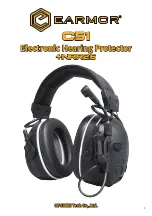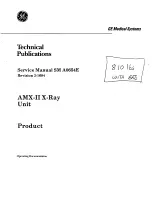
13
B-CONTROL
DEEJAY
BCD2000
6. MIDI CONTROL
5.4.2 Routing options with WDM/MME driver
The WDM/MME driver supports playback/recording of 2 audio
signals. For 2-channel recording you can select input
IN A
or
IN
B
in the WDM/MME window of the control panel. When you choose
IN A
, you can also determine the signal to be recorded (Phono A
or MIC).
When you select
IN B
, you can use the PHONE/LINE switch
to determine the signal to be recorded (phono or line).
Playback with the WDM/MME driver is always in stereo, which is
why the MASTER output and the PHONES connector of the
BCD2000 provide the same music signal.
Fig. 5.5: Audio routing with the WDM/MME driver
6. MIDI CONTROL
All control functions of the BCD2000 are sent to your computer
as MIDI data. The
M
usical
I
nstruments
D
igital
I
nterface is a
generic, non-manufacturer-specific standard that enables
communication between electronic musical instruments. Although
the BCD2000 is not equipped with the classic 5-pin MIDI
connectors, it still uses the MIDI protocol for data transmission
via USB. Thus, the BCD2000 can also control third-party software,
as long as it is able to speak MIDI. In turn, the BCD2000 can
receive MIDI data and use them to show the switching status of
the button LEDs.
Basically, two types of MIDI data are used:
Control Change
(CC no.) and
note messages
(Note no.). CC commands are used
for the real-time transmission of values that are changed
continuously. Note commands are used for the transmission of
button functions. You can use any DJ software you like to adapt
the MIDI commands to the software functions.
6.1 Sending control change functions
All rotary controls, all faders, the scratch wheel and the crossfader
are control elements sending CC data. Each control element has
a CC number assigned to it. The absolute values transmitted
range from 0 to 127, an exception being the scratch wheels as
they are infinitely variable encoders sending no absolute values.
Instead, they transmit value changes in steps of 1 (increment =
+1, decrement = -1). The following tables show the fixed
assignment of CC numbers according to function groups.
Rotary control functions:
Group
Name
MIDI
&&
no.
LOW (EQ)
3
MID (EQ)
4
HIGH (EQ)
5
GAIN
6
LOW (EQ)
7
MID (EQ)
8
HIGH (EQ)
9
GAIN
10
Value A
13
Value B
14
Value C
15
Value D
16
OUTPUT
PFL MIX
17
FX CONTROL
DECK B
DECK A
Table 6.1: MIDI commands for transmitting rotary
control functions
Infinitely variable encoder functions:
Group
Name
MIDI
&&
no.
DECK A
PITCH BEND/CUE
SEARCH WHEEL
19*
DECK B
PITCH BEND/CUE
SEARCH WHEEL
18*
* the scratch wheels tr1/-1 pulses only (Inc/Dec)
Table 6.2: MIDI commands for transmitting infinitely variable
encoder functions
Fader functions:
Group
Name
MIDI
&&
no.
PITCH Fader
11
VOLUME Fader
0
DECK A<>B
CROSS Fader
1
PITCH Fader
12
VOLUME Fader
2
DECK A
DECK B
Table 6.3: MIDI commands for transmitting fader functions
6.2 Sending button functions
All switching elements (buttons) of the BCD2000 transmit MIDI
note commands. When you press a button, the system sends a
note on command, together with the corresponding note number.
When the button is released, the system transmits a note off
command.
Press (and hold) a button = note on / release a button = note off.
(For a permanent note-on command, please select toggle on in
the software.)
Downloaded from



































